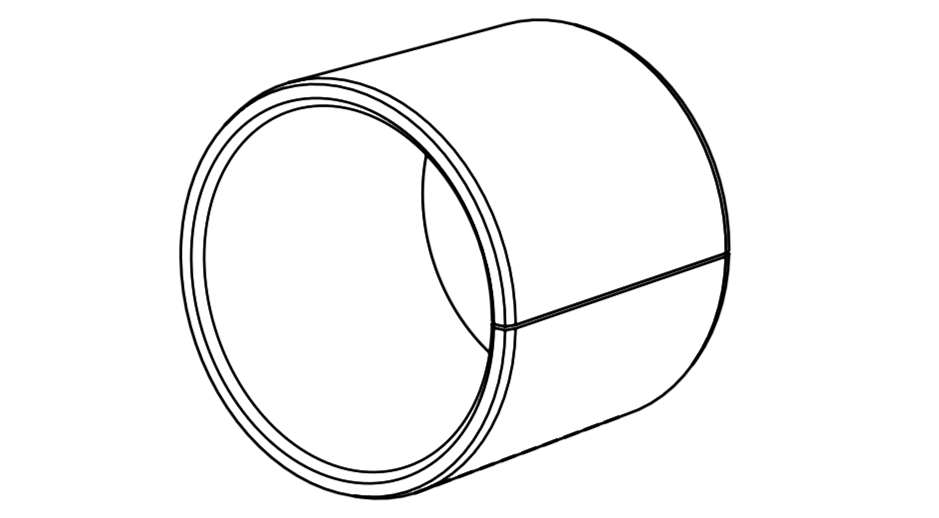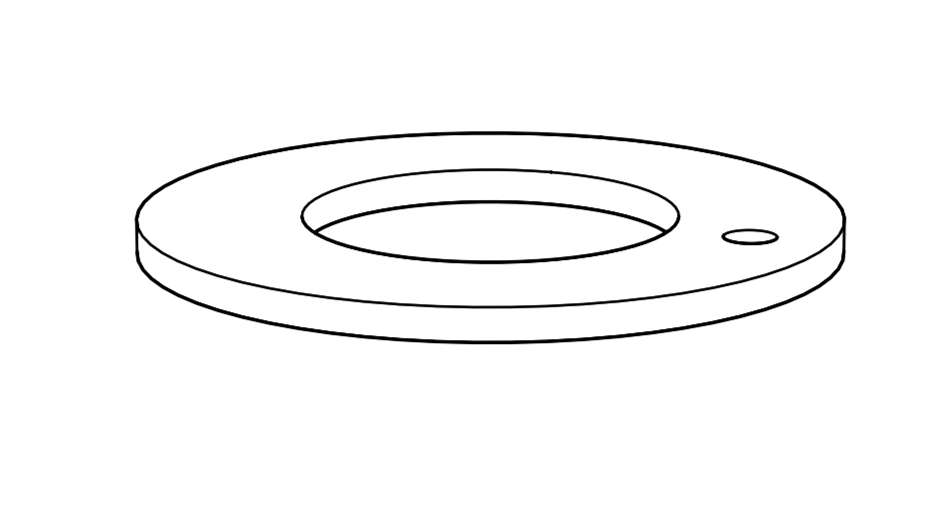GLYCO® 190
Key Features
- GLYCO® 190 works with soft mating surfaces under dry condition
- Excellent adaptability
- Ability of operation within the PTFE-overlay during all application service life
- Low friction
For some demanding damping applications running without any lubrication under oscillating conditions and soft mating surface, even solid plastic, maintenance free bearings do not achieve the targeted service life.
In addition friction improvement of the system efficiency is expected.
GLYCO® 190 is a three layer composite material. A porous tin bronze sinter structure is applied on a steel back. This layer is impregnated with a PTFE sliding material and a specific combination of fillers especially chosen to improve the performance of this material under dry running conditions. On the top of this filled bronze structure, a 50 to 100 μm thick overlay of the same sliding material is applied, providing a sufficient wear reserve for the operation of the damping application without even using the below bronze layer.
GLYCO® 190 sliding bearings are therefore providing in multiple vibration damping applications with high levels of requirements longer service life than usual PTFEbased materials. In addition, it offers lower friction than most thermoplastic-based materials, thus improving efficiency of the used system. Possible combination with other material through laser welded flange bushing.
Microsection
Microsection GLYCO® 190 according to ISO 3547 type P1
| 1 | PTFE with additives |
| 2 | Tin bronze |
| 3 | Steel back |
| 4 | Tin layer (optional) |

Technical Data
| Properties | GLYCO® 190 |
|---|---|
| Material type | PTFE based according to ISO 3547 type P1 |
| Composition | Steel back with sintered layer of tin bronze. Pore filling and cover layer (50 to 100 µm/0.00197 in to 0.00394 in) of PTFE with additives |
| Application | High wear resistance optimised adaptability and damping properties for vibration dampers. Automotive dry running dampers like various types of anti-vibration systems (e.g. dual mass fly wheel, belt tensioners, decoupling pulleys). |
| Permissible stat. specific load | 250 MPa |
| Permissible dyn. specific load | 120 MPa |
| Maximum sliding velocity |
2 m/s (dry running) 2 m/s (greased) 10 m/s (oiled) |
| Operating temperature | -60 to 260 °C |
| Coefficient of friction | 0.04 bis 0.12 (dry running and greased) |
| Stick-slip | negligible |
| Wear layer thickness (min.) | 0.2 mm / 0.0079 in |
| Lubrication
Friction Wear resistance Load capacity |
dry
+ ++ ++
Grease
+ + +
Oil
+ ++ ++ |
| Ability to support edge loads (resulting from misalignment) | standard |
| Ability to embed dirt and foreign particles | standard |
| Ability to carry alternating loads | good |
| Ability to accommodate linear movement | standard |
| Machining of sliding surface after mounting | calibration |
| Technical sheet |
Available Designs


All Materials of the
GLYCODUR® Portfolio
Catalog parts
- GLYCODUR® F
- Cylindrical bushings
- Flanged bushings
- Thrust Washers
- Strips
- GLYCODUR® A
- Cylindrical bushings
- Thrust Washers
- Strips